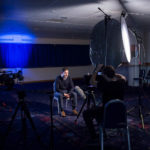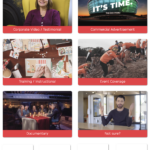Choosing the Right Interviewees for Corporate Films & Testimonials
One of the most common pitfalls we see when working with clients on corporate videos or testimonials is the temptation to include too many people on camera.
It’s understandable—clients often want to showcase the breadth of their team or give everyone involved a moment in the spotlight. But when it comes to telling a compelling story on film, more voices can often mean less clarity.
Too many interviewees can muddy the message, drag the runtime well beyond what’s engaging, and inflate the production time and budget. The result? A meandering film that doesn’t quite land with the audience—or worse, one that never gets used at all.
At Production Attic, we’ve developed a simple, structured approach to keep films focused, cost-effective, and emotionally resonant. We recommend keeping your interviewee list lean—and intentional—by covering three distinct perspectives:
1. The Leadership Perspective
Who: CEO, Project Manager, Department Head
This person sets the scene. They can explain the big picture—what the organisation does, what the project or initiative is, and why it matters. Their voice adds authority and context, grounding the story in purpose. They often won’t have personal or emotional insight into the real-world effects of the work. That’s why we don’t stop here.
Eg:
“At [Organisation Name], our mission is to create inclusive spaces for young people. This project is one of the ways we’re turning that goal into reality.”
2. The Operational Insight
Who: Staff Member, Team Leader, Project Worker
This is the person actually doing the thing. They’re in the trenches and can talk through what’s happening day to day, what makes the work challenging or rewarding, and how it impacts the people it’s meant to serve. They bridge the gap between high-level strategy and real-world implementation.
Eg:
“We run weekly workshops where young people can get creative, meet others, and build confidence. It’s been amazing to see them come out of their shell over the weeks.”
3. The End User Experience
Who: Customer, Service User, Frontline Employee
This is your emotional core. This person shows us what success looks and feels like. They don’t need to understand the strategy or the logistics—they just need to tell us their story. This is the part of the film that most often sticks with the viewer. It’s authentic, personal, and usually the most persuasive.
EG:
“I was really nervous about joining, but now I’ve met new friends and I look forward to it every week. It’s made a huge difference.”
Why Getting This Right Matters
When we follow this 3-person framework, films are:
- Clearer – the story builds logically from strategy to execution to impact.
- More engaging – the variety of perspectives keeps the audience interested.
- More efficient – fewer people on camera means faster shoots, shorter edits, and a more concise final film.
- More persuasive – the emotional authenticity of the end user ties it all together.
And when clients don’t follow this? The story gets lost. We end up interviewing six or seven people—many of whom repeat each other or don’t add much—and the edit becomes a puzzle trying to balance all voices while keeping the film under 2-3 minutes. It can be done, but it’s rarely worth the extra time or cost.
The Golden Rule
Whether you’re sticking with three interviewees or thinking about more (or less), the rule we follow is simple:
If they don’t clearly fall into one of the three roles above, we suggest reconsidering their inclusion.
That’s not to be harsh—it’s to protect the clarity of your message and the power of your story.
Want help structuring your next corporate video or testimonial? Let’s chat. We’ll help you tell your story the right way—with just the right voices.










